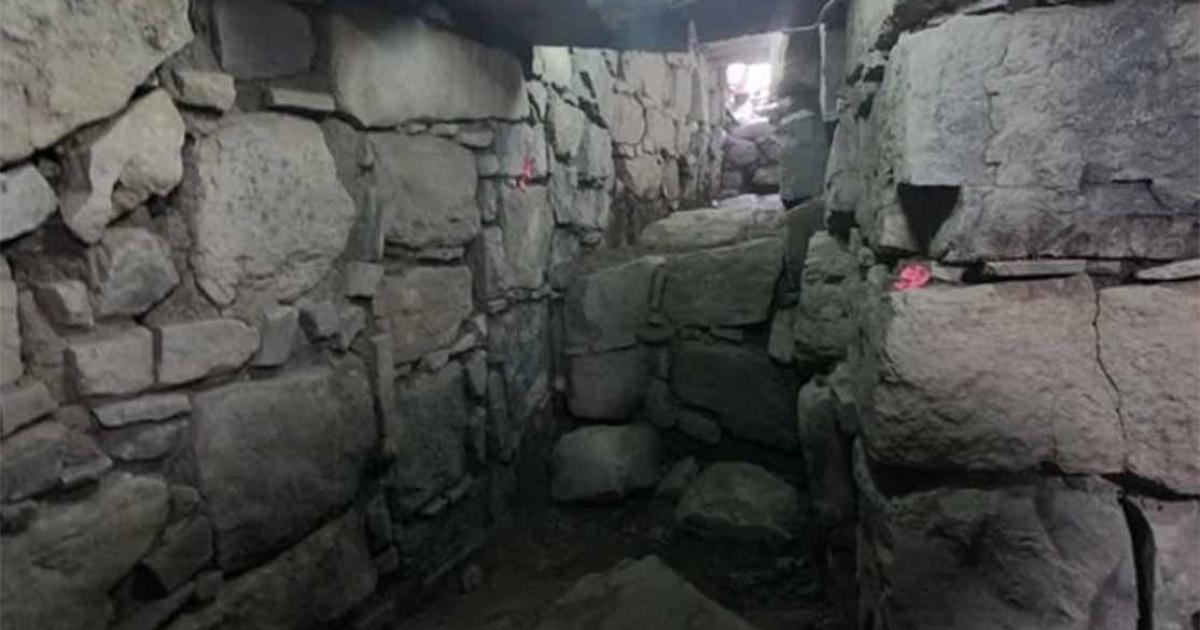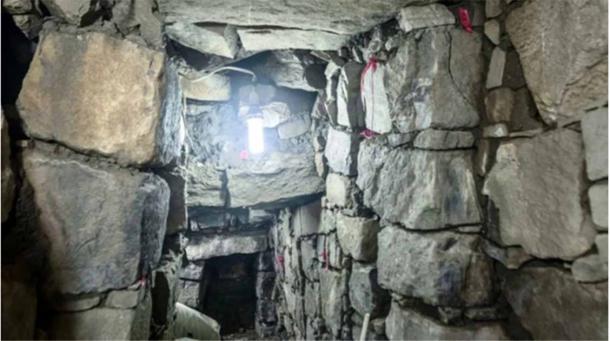
3,000-Year-Old Corridor in Peru Temple Yields Curious Condor Statue
Archaeologists in Peru used cameras mounted on robots to explore the entrance to a 3,000-year-old sealed tunnel at the Chavin de Huantar archaeological site in Peru. The excitement was static when they came across a finely crafted clay bowl, but a steely silence spread when the robots transmitted images of a massive ceramic condor’s head.
Weighing approximately 16.8 kilograms (37 lb) the ceramic condor’s head and wings were recovered from a hitherto unexplored corridor at the Chavin de Huantar archaeological site in Peru's Callejón de Conchucos, around 190 miles (306 km) northeast of Lima. Dating back to the Chavin civilization (1200-200 BC), this ceremonial center boasts intricately carved stone architecture and a sacred underground labyrinth comprising galleries, plazas, and sculpted pillars.
Previous excavations at Chavin de Huantar have revealed evidence of mystical religious rituals and the tools of human sacrifice. But perhaps most iconic of Chavin culture are the Tello Obelisk and the Lanzón monolith, which both stand testimony to the advanced craftsmanship of the Chavin people. Now, the stone condor’s head will add further volumes to the scientific understanding of Chavin cosmology and religious beliefs.

Head of research team, Professor John W. Rick at Chavin de Huantar archaeological site. (Peru Ministry of Culture)
A King of the Sky Frozen in Time
Referring to the never before explored tunnel in which the condor head was found, Stanford anthropology professor, John Rick, told Reuters that “What we have here has been frozen in time.” The lead researcher said the entrance to the “condor’s passageway” was first identified last May, and that his team of archaeologists recently explored the entrance using “cameras mounted on robots.” Rick explained that this task was anything but easy, for they had to steer around a debris field from a 1945 flood.
Rick said the team first identified a ceramic bowl in the closed corridor last May, and that the condor was found further along the tunnel this year. The lead researcher concluded that the previously sealed corridor had “served as a time capsule,” and as such it has recently been named “the condor’s passageway.”

Entrance to the south corridor of the “condor’s passageway” at the “Condor Gallery”, recently discovered in May 2022. (Peru Ministry of Culture)
Flight of the Andean Condor
Fossil evidence suggests the condor, specifically the Andean condor, has lived in the South American Andes for tens of millions of years, making them a deeply-ancient and iconic species of the continent. The oldest known artistic image of a condor ever discovered in Peru is the famous "Condor Man" which is carved on a stone pillar at the same, Chavín de Huantar archaeological site.
This ancient representation of a condor was carved by the Chavin civilization around 2,000-years-ago, and it depicts a zoomorphic human-like figure with condor attributes. It is believed the Condor Man represents the many connections between the Chavín people and the sacred bird.
The Condor in Andean Cosmovision
Andean cosmology (cosmovision) encompasses concepts of life and death, time and space, and expressing ancestral knowledge of such things celestial symbolism was extremely popular in ancient Andean societies. The condor, the puma, and the snake formed a powerful threefold symbol which was shared and worshipped by many ancient Andean cultures. Generally, the condor represents the heavens, the puma the middle world of earth, and the snake represents the underworld.

The Andean Cosmovision with its spiritual symbolism in the condor, puma and snake. Monument of the Inca Cosmological Trilogy at Aguas Calientes or Machupicchu Cusco Region, Peru (jobi_pro/Adobe Stock)
The strong and ferocious tiger was associated with Earth and represented courage, protection, vitality, and unpredictable energy. The snake signified the underworld and because it shed its skin it symbolized transformation, rebirth, fertility healing and knowledge. The king of the sky, the condor, was seen soaring above the highest mountains and it was worshipped as a wise and majestic guardian representing freedom, spirituality, and a connection between the heavens and earth.
- Ancient Acoustic Artifacts and Communication with the Gods
- Symbolism of the Mythical Phoenix Bird: Renewal, Rebirth and Destruction
Feathered Messengers of Chavin Gods
The condor's majestic qualities resonated deeply with the Chavin people’s imaginations, for it embodied the awe-inspiring natural forces they revered and sought to connect with. Therefore, in Chavin society, condors were thought of as semi-divine messengers that translated messages from humans to the gods.
Rick told Reuters that the recent discovery of the condor’s head is certainly a win for Peruvian archaeology. But he reminds that “much of the temple complex has yet to be excavated,” and many more representations of condor will no doubt be unearthed at the Chavin de Huantar archaeological site, which just keeps on giving.
Top image: In the passageways of the Chavin de Huantar archaeological site, declared UNESCO World Heritage. Source: Peru Ministry of Culture
By Ashley Cowie















